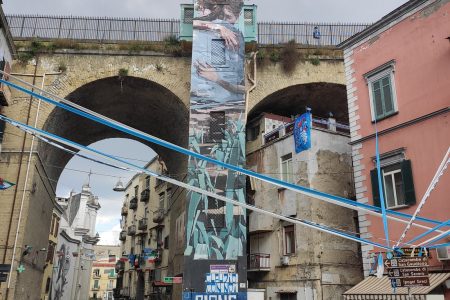Table of Contents
Giacomo Leopardi, a native of Porto Recanati in the Marche region, author of some of the greatest masterpieces of Italian literature, stayed in Naples in the final phase of his fragile, yet strong, life. Discover the itinerary to retrace his steps in the famous Neapolitan city.
Naples, a great city with a mild climate
Giacomo Leopardi arrived in Naples in October of the 1833: was invited to the hometown of his inseparable friend Antonio Ranieri. Even at that time, Naples was a very populous city, as well as the seat of lively cultural salons, on par with major European capitals.
Unmet expectations
The poet, given the pleasant temperature and the beauty of the landscapes, nurtured high expectations in this regard, unfortunately disregarded in favor of his certain insulation. Indeed, in one of the autograph letters, he states that he always felt he was passing through. What disappointed him was the reception of people, who looked at him with distrust, probably also because of the painful kyphosis of the spine that had plagued him since the age of 16.
The first accommodation, a stone's throw from Via Toledo
Wanting to retrace the poet's steps, one should start from where he lived in the beginning: at 88 S. Mattia St., in Berio Palace. He lived in a furnished room located on the second floor. Apparently, Leopardi did not trust the landlady, who, when the poet came down with consumption (tuberculosis), complained about it to Ranieri and invited the two to move elsewhere. This episode can be found in the film's transposition of the poet's life The Fabulous Young Man , in which Elio Germano is the lead actor.
Palazzo Cammarota, in the Spanish Quarters.
The second stop on this itinerary is Cammarota Palace, residence of the poet from December 1833 to May 1835, located in St. Mary Ognibene Street. To enjoy a wider view of this building, you can also admire it from the Stairs of San Pasquale at Corso Vittorio Emanuele, where on Thursdays in June, every year since 2012, the poetry review is held. Leopardi View, directed by writer Constanzo Ioni.
The apartment in Capodimonte
The poet, thus, in 1835, moved with his friend Ranieri to Vico Pero No. 2, in the Stella neighborhood, to a second-floor apartment, then surrounded by greenery, overlooking St. Teresa degli Scalzi Street. However, it seems that Leopardi did not like living so close to nature.
The salubrious air of Villa delle Ginestre
Over time, the poet's health deteriorated greatly, to the point that he had difficulty even reading and writing. Then, when cholera broke out in the city, he, on several occasions (between April and June of '36 and between August and February of '37), together with Ranieri, moved to Villa Ferrigni in Torre del Greco, to enjoy the good air, which was useful in curing dropsy but also, according to the beliefs of the time, to ward off the epidemic.
The home in which he resided, Villa Ferrigni, was then owned by Ranieri's brother-in-law. The villa was nicknamed the Villa of the Broomstones because it was composed here. The broom. Villa Ferrigni can currently be visited: the desk where the famous poem was composed can be seen there; it seems that Leopardi occupied the brightest room on the upper floor.
You might be interested
Walking tour among the wonders of the Sanità district
per person Book
Guided tour of the wonders of Naples: Virgil's tomb at Virgilian Park
per person Book
Visit Naples in half a day: guided tour from Piazza Dante to Piazza del Gesù
per person Book
The uncertain causes of death
However, in the Vesuvian countryside, he suffered from the cold and, given the remote location of the villa and the overpriced cost of medical visits, he was unable to receive adequate care. That was why, in February '37, he returned to the Capodimonte house in Vico Pero 2, where he died on June 14, 1837 from hydropericardia, at the age of 39. It is not certain, however, that he had not contracted cholera.
The tomb at Vergiliano Park
Ranieri succeeded in getting his friend's body not thrown into the mass grave but Buried in the church of San Vitale, Fuorigrotta. In 1939, Leopardi's alleged remains were moved to the Vergilian Park of Piedigrotta next to the cenotaph Of the great poet Virgil, better known as Tomb of Virgil.




0 Comments